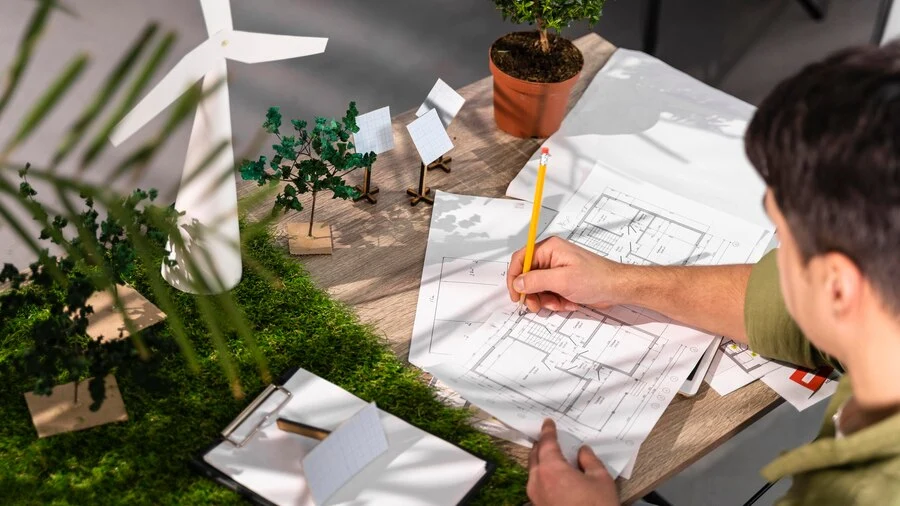Space planning is more than just a buzzword in the world of interior design. It is the art and science of arranging your home’s layout to create a harmonious balance of flow and functionality. A well-executed space plan can transform any living area, making it feel more spacious, comfortable, and inviting. In this article, we will explore the transformative power of space planning, providing practical tips and expert insights to help you optimize your home.
The Essence of Space Planning
Space planning involves strategically arranging furniture, decor, and functional elements within a room to maximize efficiency and aesthetic appeal. It’s about making the most out of every square foot, ensuring that each area of your home serves its intended purpose effectively. As Patti Moran, an interior designer, puts it, “Space planning is not about how much space you have; it’s about how you use it” (Bonita Springs Florida Weekly).
The Benefits of Effective Space Planning
- Enhanced Functionality: A well-planned space meets the needs of its occupants. Whether it’s ensuring that your kitchen allows for easy meal prep or that your living room accommodates comfortable socializing, the goal is to make your home work for you.
- Improved Flow: Good space planning takes into account the natural flow of movement through a space. Architect Karen Wolf highlights this by saying, “An effective space plan considers not just the placement of furniture, but also the traffic flow and how people will use the space” (Trulia).
- Increased Home Value: The National Association of Realtors (NAR) conducted a study in 2023 that found homes with well-planned spaces tend to sell faster and for more money than those with poor layouts. This underscores the financial benefits of investing in smart space planning.
- Enhanced Well-Being: The Mayo Clinic’s 2021 study found that a cluttered and poorly planned home can lead to stress and anxiety. In contrast, a well-organized home promotes peace and well-being, contributing to better mental and physical health.
Practical Tips for Optimizing Your Home’s Space
Assess Your Needs and Lifestyle
Before diving into rearranging furniture, take time to assess your needs and lifestyle. Consider the following questions:
- How do you use each room?
- What are your daily routines and activities?
- Do you entertain guests often?
- Do you need dedicated spaces for hobbies or work?
Create Zones
Creating zones within a room can help delineate different functions and improve the overall flow. For example, in an open-plan living area, you might have distinct zones for lounging, dining, and working. Using rugs, furniture arrangement, and lighting can help define these areas without the need for walls.
Maximize Vertical Space
When floor space is limited, think vertically. Shelving units, tall bookcases, and wall-mounted storage can free up valuable floor space and keep your home organized. This is particularly useful in smaller homes or apartments.
Embrace Multi-Functional Furniture
Invest in furniture that serves multiple purposes. Sofa beds, extendable dining tables, and storage ottomans are excellent examples of pieces that can adapt to your changing needs and maximize the use of available space.
Pay Attention to Traffic Flow
Ensure that there are clear pathways for movement throughout your home. Avoid placing furniture in a way that obstructs natural walking routes. As Peter Marino, an interior designer, advises, “Good space planning can make a small home feel like a mansion, and a mansion feel cluttered and uncomfortable” (Peter Marino Architect).
Personal Anecdote: A Living Room Transformation
A few years ago, I moved into a cozy but small apartment. The living room felt cramped and cluttered, with furniture awkwardly placed and no clear path for movement. I decided to tackle the space planning myself. By repositioning the sofa to create a more open seating arrangement and adding a tall bookshelf for vertical storage, I managed to transform the room. Suddenly, it felt like a spacious and inviting area, perfect for relaxing and entertaining friends.
Expert Insights on Space Planning
Balancing Style and Functionality
Emily Henderson, a renowned interior designer, emphasizes the importance of balancing beauty and functionality. “The goal of space planning is to create a home that is both beautiful and functional, a place that reflects your personal style and meets the needs of your lifestyle” (Style by Emily Henderson). This means that while aesthetics are important, they should not compromise the practicality of your space.
The Psychological Impact
Joanna Gaines, an interior designer known for her work on “Fixer Upper,” speaks to the psychological benefits of good space planning. “Don’t underestimate the power of space planning. A well-planned space can improve your mood, productivity, and overall well-being” (Homes and Gardens). This insight is backed by research from the Mayo Clinic, highlighting how organized and thoughtfully designed spaces contribute to better mental health.
The Importance of the First Step
Michelangelo Signorile, another expert in the field, stresses the foundational role of space planning in interior design. “Space planning is an essential first step in any interior design project. It ensures that your home is both stylish and livable” (Immobiliare). Starting with a clear plan sets the stage for a cohesive and functional home.
Studies Supporting Space Planning
Several studies underscore the importance and benefits of effective space planning:
- Residential Property Values: The 2023 study by the National Association of Realtors found that well-planned homes not only sell faster but also command higher prices.
- Household Satisfaction: According to a 2022 study by the University of Surrey, individuals living in homes with good space planning report higher levels of satisfaction with their living environments.
- Mental and Physical Health: The Mayo Clinic’s 2021 study found a direct correlation between cluttered spaces and negative mental health outcomes, such as stress and anxiety. Conversely, well-organized homes foster a sense of calm and well-being.
- Space Planning for Optimal Living: The American Institute of Architects (AIA) published a comprehensive guide in 2020, detailing how to create functional and stylish homes through effective space planning. This guide serves as a valuable resource for homeowners and designers alike.
Personal Anecdote: The Home Office Dilemma
During the pandemic, like many others, I found myself working from home. My initial setup was at the dining table, which quickly became uncomfortable and disruptive. I decided to reconfigure a small corner of my bedroom into a dedicated home office. By adding a compact desk, proper lighting, and some wall-mounted storage, I created a functional workspace. This small change drastically improved my productivity and overall satisfaction with my home environment.
Conclusion
Space planning is a powerful tool that can transform your home, making it more functional, beautiful, and enjoyable. By understanding your needs, creating zones, maximizing vertical space, and choosing multi-functional furniture, you can optimize your living areas. Expert insights and research further highlight the profound impact of good space planning on home value, satisfaction, and well-being.
As you embark on your space planning journey, remember the wise words of interior designers like Patti Moran, Karen Wolf, and Emily Henderson. Their insights, combined with practical tips and personal anecdotes, will guide you in creating a home that truly reflects your style and meets your needs.
Whether you have a sprawling mansion or a tiny apartment, effective space planning can make a world of difference. Start today, and transform your home into a haven of comfort and functionality.










